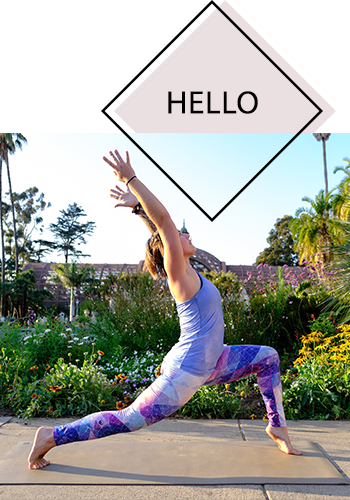Fall Cooking (A Jam Recipe)
/
Photo via A Cup of Jo.
Does it feel like fall where you are? Chicagoland has been hit with cooler temperatures and I find myself bundling up and looking forward to warm coffee drinks, cozy socks, and candles.
Today I'm excited to bring you a guest post from Lily McCann about how to cook according to what's in season. Thanks, Lily, for sharing your insights! :)
John Keats had it right when he said this was the season of mists and mellow fruitfulness. Fall, despite signaling a return to colder and wetter weather, provides us with a chance to hunker down and fill the house with the wonderful smells of cooking and baking. Those flavors are redolent of times gone by, when people made the most of what nature had to offer them and there was little in the way of pre-packed and processed foods filling the shelves. This season, why not think about having a few kitchen bound days and making your own jams and preserves?
Jam making and preserving
Jam making can seem like a bit of a daunting prospect, but it doesn't have to be.
The first important step is to clean and sterilize your jars. Simply wash them in clean, hot soapy water. Dry them with a clean tea towel and then put them into a hot oven for around ten minutes. Take them out and leave them to cool on a baking sheet.
Photo via Pinterest.
This jam recipe will use fresh blackberries and apple. It’s always a good idea when making blackberry jam to add apple to the mix, this is because blackberries have very little pectin of their own and won’t set easily; an apple contains lots and will give the jam a firmer consistency.
The thing to remember is that it’s the same quantity of fruit to sugar. For two pounds of blackberries, you’d need two pounds of sugar and so on. You may actually want to taste the fruit first. If it’s very sweet, consider adding a little less sugar. The next step is to put all the fruit into a large pan. Many people extol the virtues of having a preserving pan. It really isn’t necessary. A large, clean saucepan is just as good.

Photo via Pinterest.
Put your fruit into the saucepan and heat so that the juices begin to run and warm up. During this process, stir the fruit but be careful not to break it up too much. While this is happening, put the sugar into a heatproof bowl and warm in the oven (handy, since the oven should still be hot from sterilizing the jars). Leave it for around ten to fifteen minutes. It should feel warm to the touch when it comes out.
Now add the sugar to the fruit, stir together and warm through until the sugar has completely dissolved. You’ll know when this has happened. The back of the spoon you’re using to stir will come out of the fruity mixture without grains of sugar stuck to it and it will feel less “gritty” when you stir.
Increase the heat in the pan and wait for it to boil. Cook it on this rapid boil for around five minutes. While this is happening, place in your deep freeze a couple of saucers or small plates. After the five minutes is up, place a teaspoon full of the jam mixture on one of the cold plates. Push it with your index finger. If it wrinkles, it has set. If it doesn't wrinkle, boil again for another five minutes then try the wrinkle test again on the second saucer. It may take two or three attempts to get this right.
Once it has set, then take it off the heat and immediately pour into the sterilized jars. Make sure each one is completely full and tightly fastened. When the jars are completely cold, label them.
A word of caution
The preserver must beware of one of the most common problems faced by jam makers everywhere and that is mold developing on the product. If you find a few weeks or months after making the jam that it has developed this problem, discard immediately. There could be any number of reasons why jam making goes wrong, the fruit may have been over-ripe or too wet, the jars may not have been sterilized thoroughly or simply the ambient temperature was too high. The only time you want penicillin is in a safe prescription from your doctor!
While it doesn’t specifically have to be Fall to make jam, the season does provide some of the best fruits for doing so. This time of year blackcurrants, blackberries, damsons and late cropping varieties of apples, raspberries and plums are absolutely ideal for preserving. As Hippocrates said, "Let food be thy medicine and let medicine be thy food."
Making jam yourself or even simply preserving the fruit for later consumption is a great way to make sure that as many of the natural vitamins and minerals are kept and can make such a welcome treat at breakfast time or as part of an afternoon tea with friends. Happy preserving!
Photo via Le Marchet St George.
To check out more of Lily's work, see her post on herbal teas.










